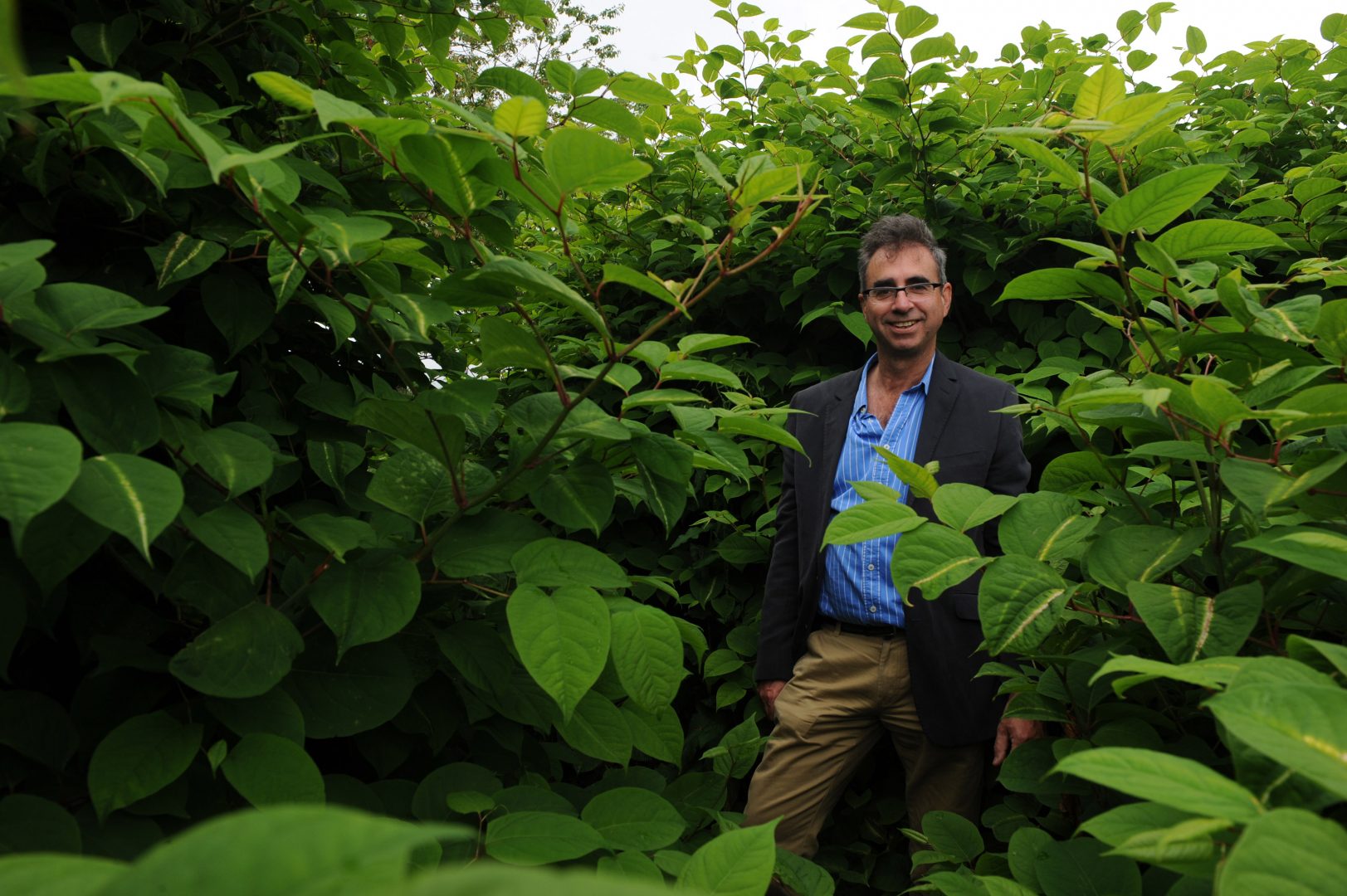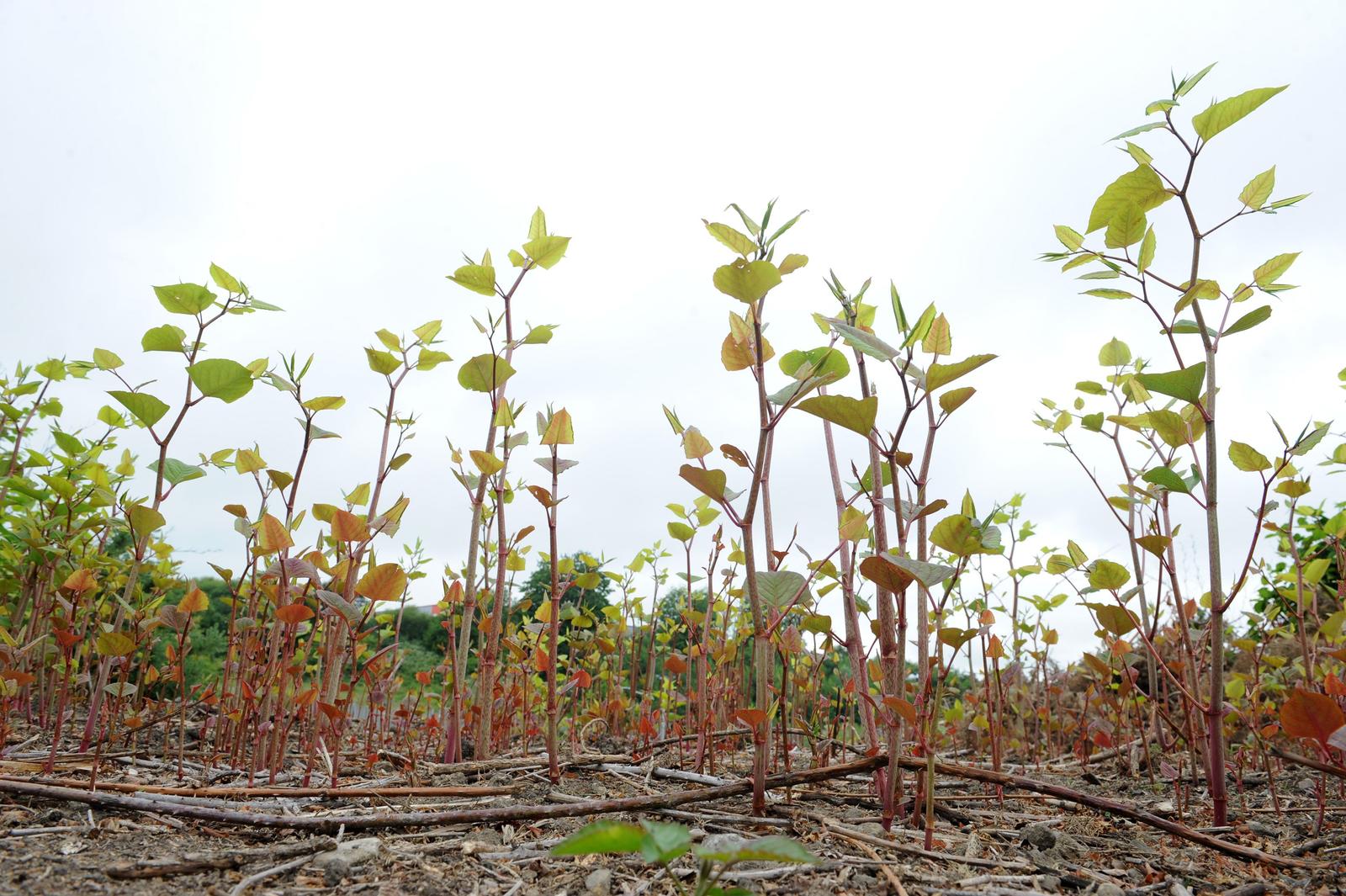It is a plant that causes havoc with property prices and can cause huge problems with altering ecosystems, but have you heard of Japanese knotweed before? We spoke further about it with Nic Seal, the founder and MD of Environet, the Japanese knotweed removal firm, which uses eco-innovative technology to remove the weed from properties and premises.

We talked about the damage it can cause, and how his company has developed tech so that this pesky plant can be used to help, not hinder the environment.
How does Japanese knotweed affect biodiversity?
An invasive, non-native plant, Japanese knotweed reduces diversity of plant species by outcompeting native flora, denying them water, nutrients and sunlight. With no natural predators in the UK, it spreads rapidly, forming dense thickets that crowd out other plants, altering the natural ecosystem.
There is also some evidence that knotweed releases growth-inhibiting bio-chemicals into the soil to reduce competition with other plants in its vicinity. Known as allelopathy, it could explain why Japanese knotweed is so invasive in its non-native environment where native plants have not yet evolved to overcome these growth-inhibiting bio-chemicals.
Could you explain a bit more about plans to turn knotweed waste into biochar and how this could eliminate the need for landfill?
The vast majority of Japanese knotweed waste currently ends up in landfill sites where it rots, producing damaging landfill gases such as carbon dioxide and methane. Environet has filed a patent application for the method and apparatus used to convert Japanese knotweed waste into biochar, thereby locking in carbon and eliminating the need for landfill.
The process involves heating the organic matter in the absence of oxygen, otherwise known as pyrolysis, thereby removing naturally occurring tars to leave carbon in the form of charcoal. The charcoal benefits from a honeycomb-like structure which can then be charged with additives such as liquid organic fertilisers to create a soil amendment, improving soil structure and locking carbon into the soil for hundreds if not thousands of years.
Ultimately, we believe all knotweed material could be converted from a biologically active pest into carbon gold. Not only would this save a considerable amount of money, particularly for clients in the commercial sector where often vast quantities of knotweed infested soil is sent to landfill, but there would also be a very clear positive benefit to the environment.
Japanese knotweed can increase the risk of soil erosion and affect ecosystems, but if turned into biochar it could help facilitate plant growth – so in a sense, Japanese knotweed could be both the cause and solution?
Yes, we want to harness the incredible power of knotweed in a positive way. When it grows it is highly efficient at scavenging carbon dioxide from the atmosphere, forming carbon-based plant material and releasing oxygen back into the atmosphere. By locking carbon away in biochar, this process can aid the growth of desirable plants and, in the longer term, play a role in the fight against climate change.
Are there types of buildings and areas of the UK that are more affected by Japanese knotweed? (based on verified findings)
Last year (in 2019) we launched an interactive Japanese knotweed heatmap, Exposed, which tracks Japanese knotweed sightings across the UK. It’s already been populated with over 50,000 infestations and allows members of the public to enter their postcode to discover the number of infestations nearby. According to Exposed, the worst affected areas in the UK include Bolton in Lancashire, Bristol and North Wales, Rotherham, Nottingham and of course London. Ports and areas with an industrial heritage tend to be badly affected, as they’ve been subjected to large amounts of soil movement which can aid the spread of knotweed.

Any building can be affected if Japanese knotweed is left untreated for a number of years. While claims it can grow directly through concrete are exaggerated, it will exploit weaknesses such as cracks in concrete or brick walls and it can grow directly through asphalt as well as into drains, resulting in costly repairs. It will also travel laterally to emerge at the side of a concrete structure that has been built on top of it.
What is the average price reduction of a property with Japanese knotweed?
Because of the costs associated with treating knotweed and the stigma attached to the plant it can impact property values by as much as 10-15%. We have developed an online calculator to help people determine the impact of knotweed on the value of their property, which takes into account the size of the infestation and how different treatment methods will protect its value.
What led to the creation of the Japanese knotweed tool Xtract™?
We needed to find an eco-innovative solution to the problem of consigning vast quantities of soil to landfill following large-scale Japanese knotweed excavation, for example on development sites. I set about designing a machine which could separate the knotweed rhizome from the excavated material, allowing us to return the vast majority of cleaned soil to the ground. Environet’s patented Xtract™ solution is now used extensively on development sites, avoiding the huge environmental and financial costs of consigning vast quantities of otherwise good soil to landfill and importing clean fill. It can be completed in a matter of days, costs about half of the ‘dig and dump’ alternative, uses zero-herbicide and with conversion to biochar, creates zero-waste.
What makes Xtract™ stand out from other Japanese knotweed solutions?
On large development sites, herbicide is rarely the answer, as it takes at least 2 – 3 years to complete and without digging up all the infested soil, there’s no way of knowing for certain that all the knotweed rhizome is dead. An alternative for developers is the “dig and dump” method, where all the excavated material is consigned to landfill. As far as I’m aware, we’re the only firm to have developed a solution for large scale Japanese knotweed removal which tackles all these issues, offers certainty to clients and helps protect the environment.
Do you have plans to make the products Environet offers even more eco-innovative?
Yes, we are always looking for new eco-innovative solutions to the Japanese knotweed problem and invest considerable sums in Research & Development each year. We’re currently testing the effectiveness of new root barriers in our lab at our Surrey HQ and at our Japanese knotweed-infested test site in Sussex, which we purchased several years ago to enable us to grow and develop our research programme. This year we will also be focusing on further developing our biochar solution so it can be delivered at scale.



